If you’re looking for a compact plant and you don’t want to deal with messy soil, air plants are the plants for you!
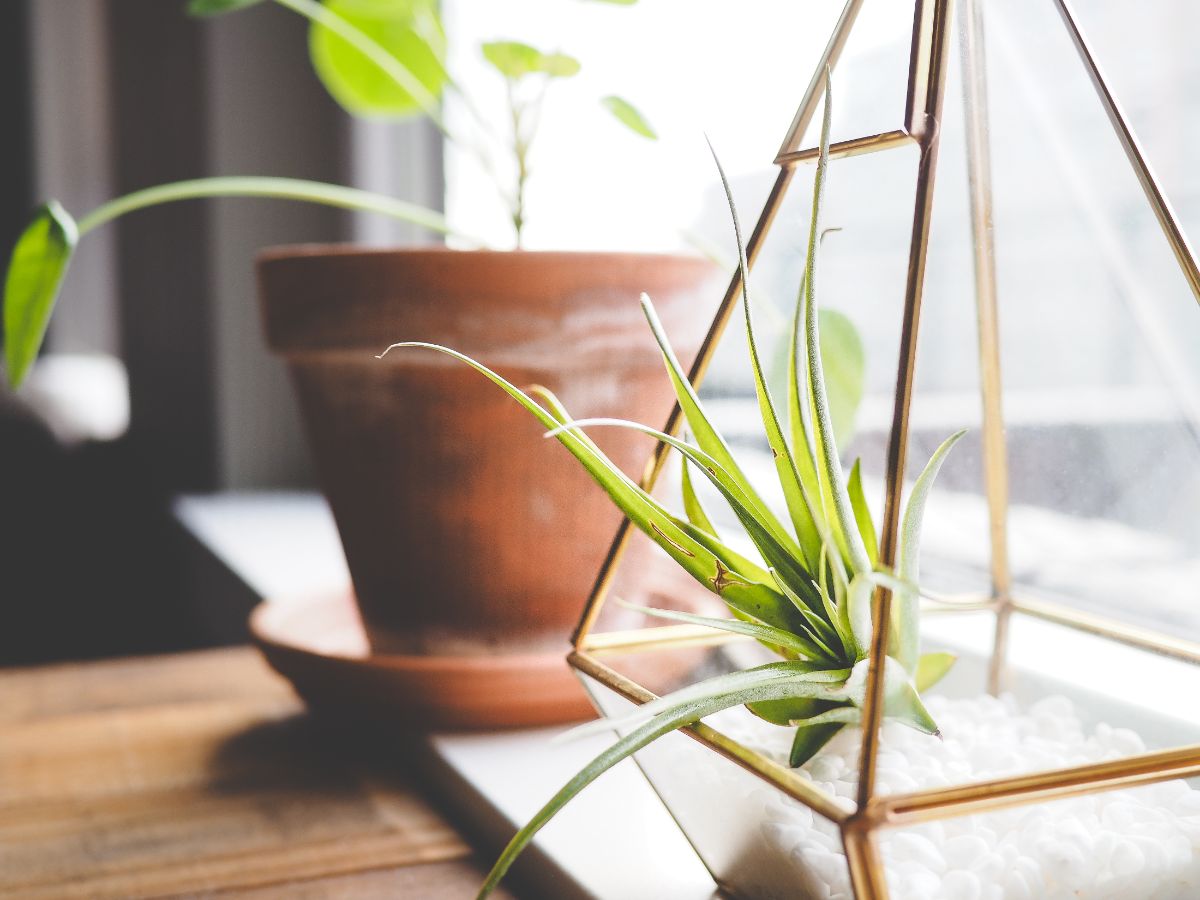
Easy-going air plants (Tillandsia spp.) are great for beginning gardeners because they are just so simple to keep! These epiphytic plants generally don’t need soil to grow and can be kept in hanging baskets or tabletop displays. What’s more, air plants can get most of the nutrients and water they need from the air, so they need very minimal care.
Many home gardeners are confused by air plant care. After all, if a plant doesn’t need soil, how do you water and fertilize it?
In this guide, we’ll answer all of your air plant questions and help you tend your air plant collection like a pro.
Jump to:
How to care for your air plant
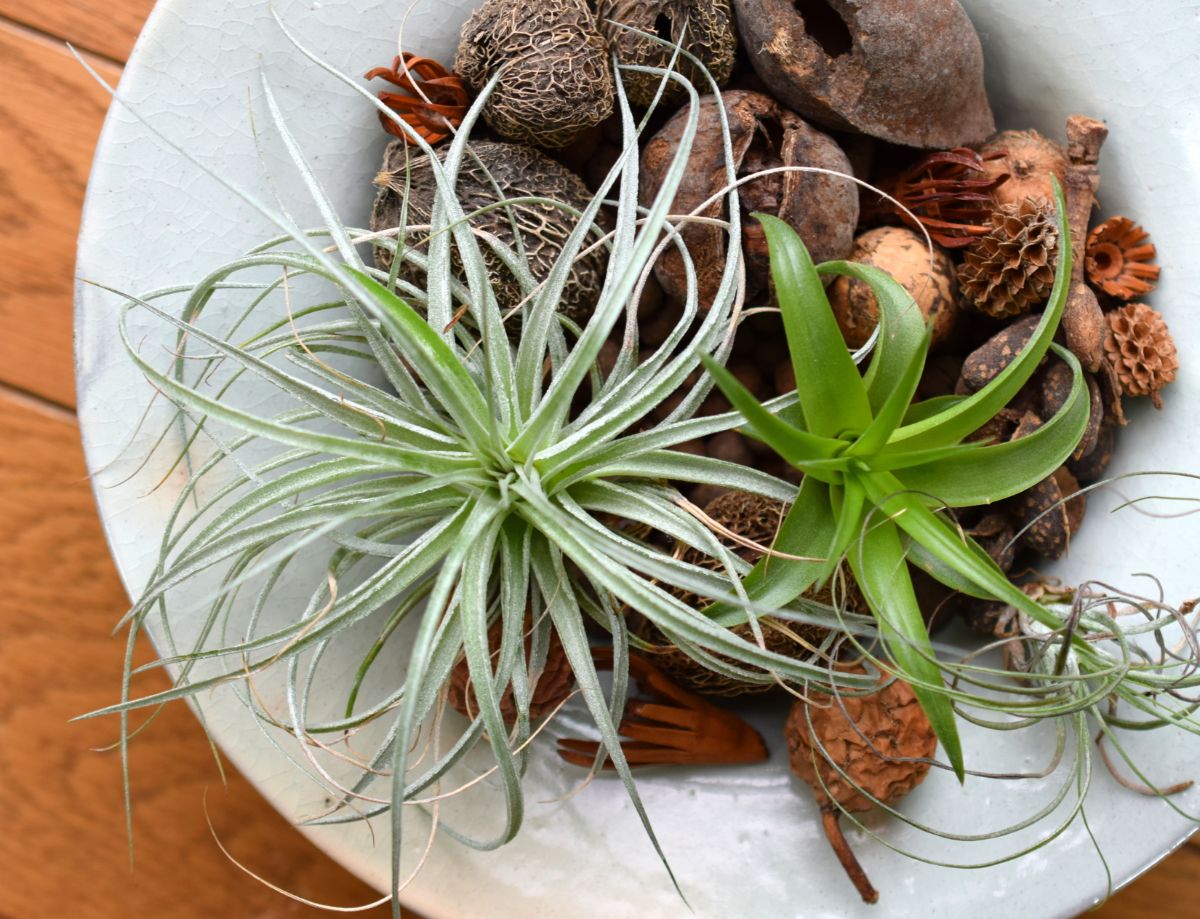
| Plant name: | Air plant |
| Scientific name: | Tillandsia spp. |
| Native range: | Southern United States to South America |
| Growing zone: | Zones 10 to 12 |
| Light requirements: | Bright, indirect light |
| Water requirements: | Moderate |
| Size: | Species range from 2” to 18” high |
| Bloom color: | Multi-colored |
| Toxic? | No |
As houseplants, air plants are particularly prized due to their compact size, which makes them perfect for small spaces. Air plants can be kept in terrariums, mounted to driftwood, or hung in hanging baskets to create an impressive display. If you love crafting, air plants can be particularly delightful to work with, as there are many creative ways to display them.
Below you’ll find some air plant display tips and everything else you need to know to grow air plants in your home.
Growth habit

In nature, air plants can be found growing in the nooks of tree branches, along raised tree bark, and even on stones. This is because these intriguing plants generally don’t need soil to grow. Instead, air plants anchor themselves to trees and rocks with the help of their aerial roots and then absorb most of the nutrients and water they need from the surrounding air.
There are over 650 different species of air plants today, and those different air plant varieties can look quite different. Some air plants exhibit long, thin leaves, while other air plants’ leaves are spiky. Still, other air plant species, like Spanish moss, are soft and threadlike and grow together to form billowy, green curtains that cascade from tree branches and houseplant shelves alike.
Regardless of the particular species, most air plants feature a cluster of tapering leaves that extend from the center of the plant and grow upwards in a slightly mounded or cylindrical form. Most air plants only grow to a few inches in height, although there are a few air plant varieties (like Tillandsia xerographica) that can grow to roughly 3’ in diameter.
As monocarpic plants, air plants only bloom once in their life. However, when they do bloom, air plants are sure to dazzle with vibrant flowers in pinks, reds, and yellows that look truly out of this world!
Light

In the wild, air plants are understory plants that grow in the protected shade of larger trees.
As houseplants, air plants grow best with bright, indirect light. Too much direct light can cause leaf burn and other issues.
Water

Beginning plant keepers are often confused by how to water air plants. Since these plants generally don’t grow in soil, watering can be a bit different, but once you get the hang of it, it’s actually quite simple.
Most air plants do best when they’re watered using the soaking method. To do this, simply place your air plant in a bowl of aquarium water or rainwater for about 20 to 40 minutes. Remove your air plant from the water and allow it to dry off a bit on a paper towel before returning your plant to its stand or basket.
Some air plants, like Tillandsia xerographica, have cup-shaped centers that can hold water. These plants should be inverted over a paper towel and allowed to dry out thoroughly after watering to avoid issues with waterlogged stems and rot.
How often you need to water your air plant will vary depending upon the species you’re growing, but most air plants will grow when watered once every 1 to 2 weeks.
Note: This method of watering is well-suited for the most common types of air plants that you’ll likely find at local garden centers. However, it’s important to do a little research on the particular air plant variety you’re growing to make sure you understand its specific watering needs. For example, Tillandsia tectorum is a variety of air plant that is naturally found in arid regions, and it needs less water than most other air plants.
Temperature and humidity
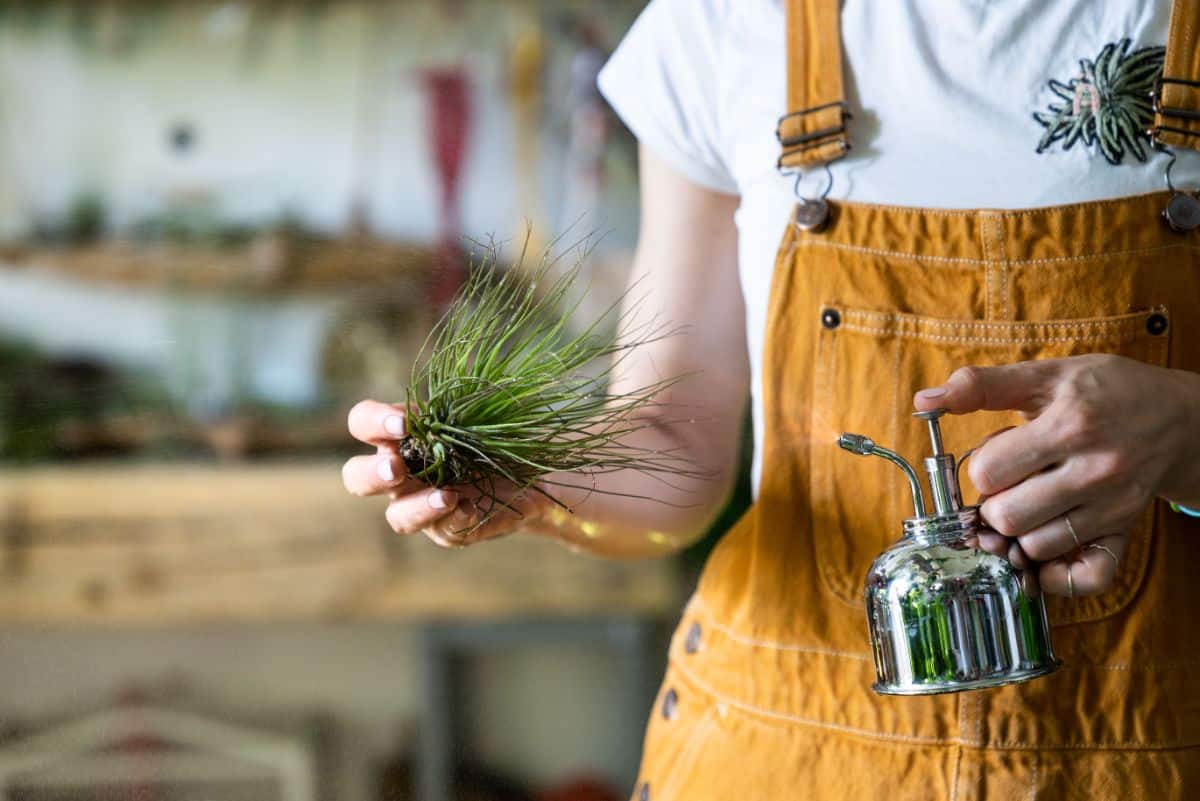
Ensuring that your air plants receive enough humidity is key to growing air plants successfully. Because these plants grow best in warm and humid environments, you may need to add a bit of supplemental humidity to make sure your air plants don’t develop crispy leaves or other issues.
Air plants grow best when humidity levels are between 50 and 70%, but most indoor air has humidity levels around 30 to 40%. Keeping your air plants in humid spots of your home, like your bathroom, can help ensure your plants always receive enough moisture. Adding a humidifier near your plants is another easy way to boost humidity levels.
If you don’t want to invest in a humidifier, you can also mist your air plant 1 to 3 times a week with a spray bottle. Just make sure you research your specific air plant species’ needs beforehand, as a few air plant varieties don’t like extra moisture on their leaves.
As far as temperature goes, air plants will grow happily at average room temperature; however, they should be protected from drafty windows and heating units.
Soil
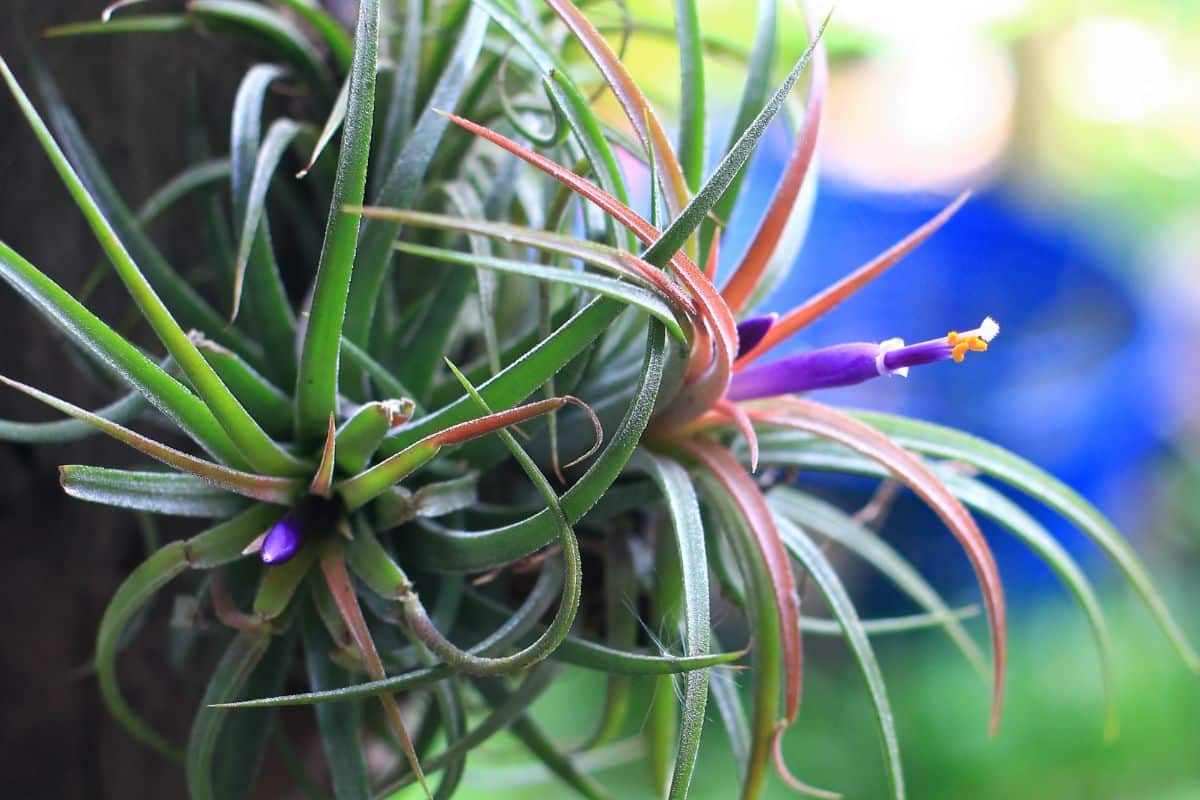
As epiphytes, most air plants generally don’t need soil to grow, and planting your air plants in soil can cause rot and other issues.
That said, there are a few terrestrial air plant species that do grow in soil. These air plant varieties can be potted in a well-draining potting mix suitable for houseplants.
Fertilizer

Air plants are easy-going plants, and they don’t necessarily need fertilizer. However, you can opt to fertilize them if you want to give them an extra nutrient boost.
Choose a fertilizer that is specifically designed for air plants or bromeliads, or opt for a liquid, organic fertilizer and dilute it to ¼ strength. To apply, simply add the fertilizer to your air plant’s regular watering regime by mixing water-soluble fertilizer into your plant’s water prior to soaking your plant. This can be done several times throughout the year, although fertilizer should be withheld during the winter months when your plant is in a state of dormancy.
Alternatively, you can choose to water your air plants with aquarium water, which is rich in nutrients plants love. If you do this, you shouldn’t need to fertilize your air plants at all.
Pruning
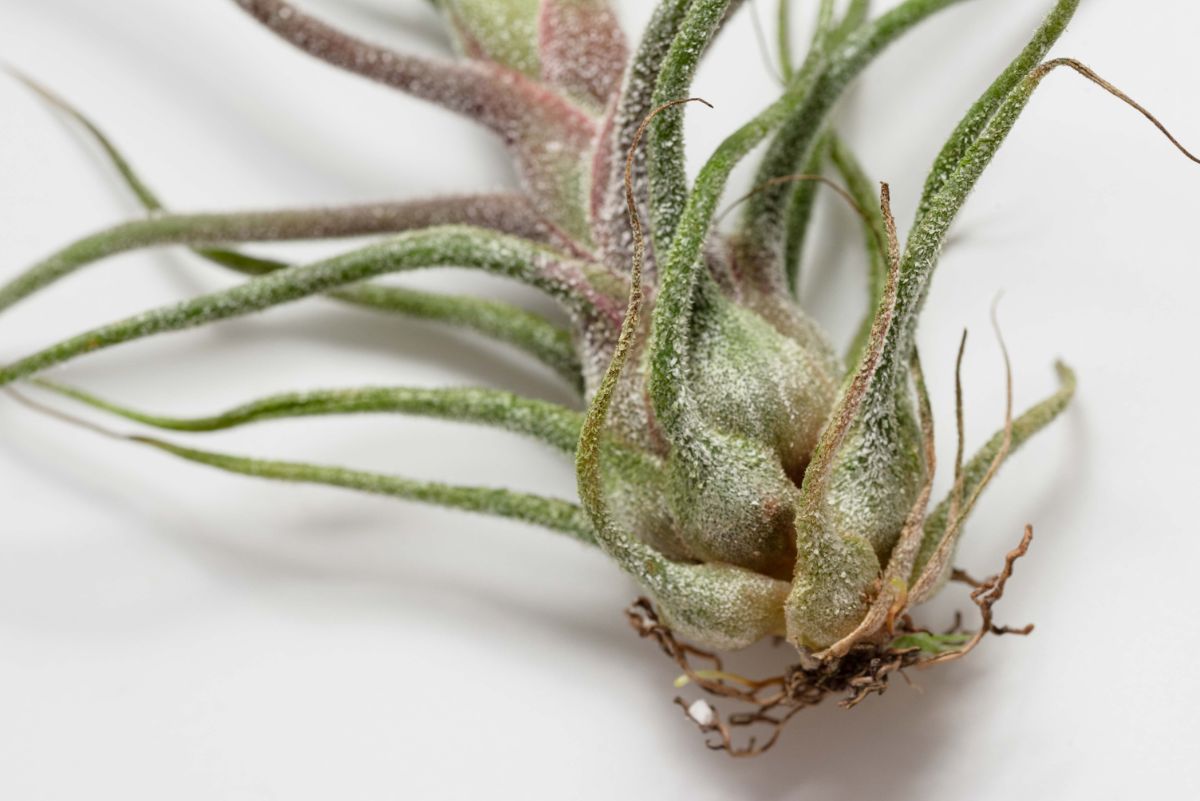
Unlike most plants, air plants don’t need their aerial roots to absorb nutrients from the soil. Instead, these aerial roots are used solely to anchor air plants in place on tree branches and other materials. As houseplants, air plants don’t need aerial roots at all, so it’s up to plant parents whether or not they want to prune the roots away or keep them in place.
If you don’t like the look of your air plant’s aerial roots, you can simply trim them off with cuticle scissors.
Beyond their roots, air plants don’t usually need any pruning, but if your plant has a damaged leaf, you may want to nip it off to improve the appearance of your plant. To do this, use cuticle scissors or other small scissors and cut your air plant’s damaged leaf at an angle to give it a more natural appearance.
Toxicity
Air plants are non-toxic and are safe to keep in homes with pets.
Air plant propagation
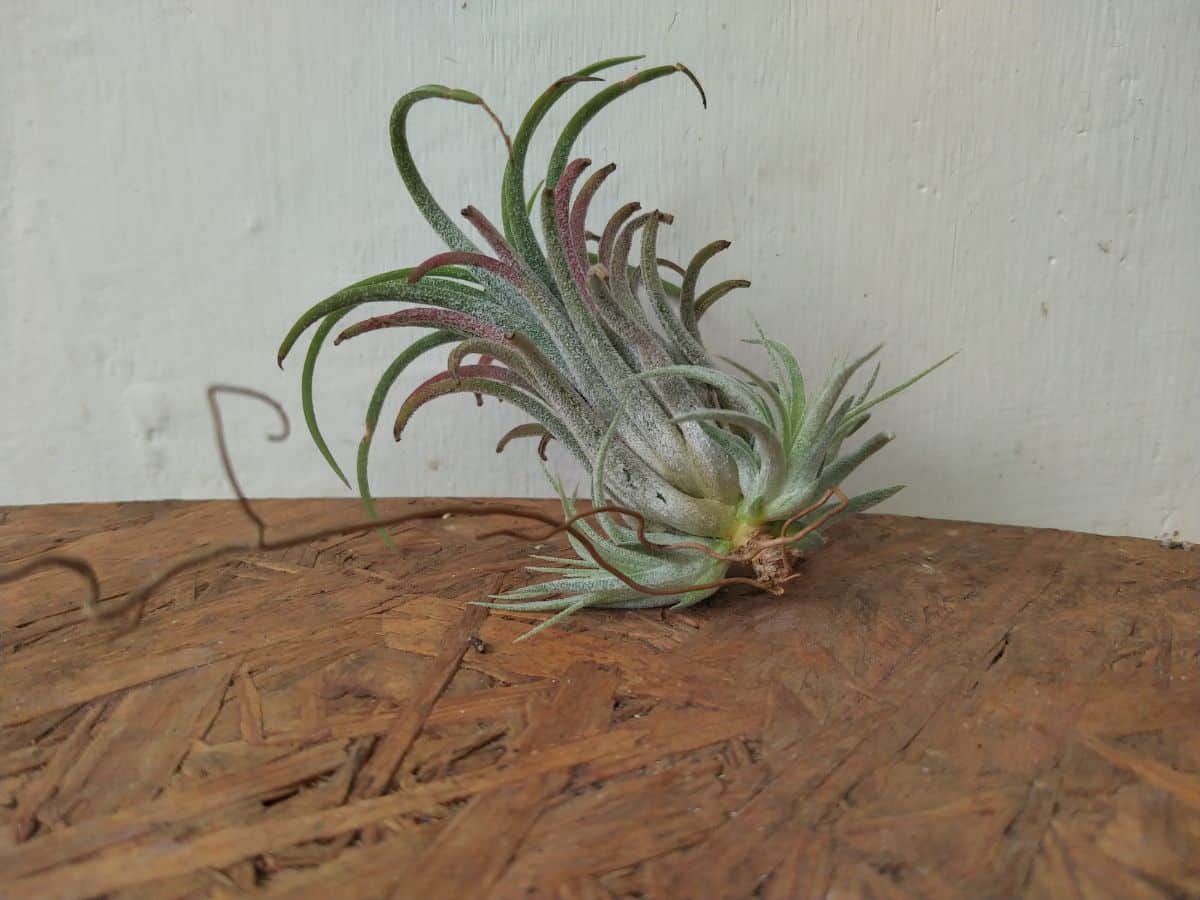
After flowering, air plants will die back, but they usually produce baby air plants or “pups” before they do. These air plant pups can be separated from the parent plant to keep your air plant collection going strong with a new generation!
Air plant pups should remain attached to the parent plant until they are about ⅓ the size of the parent plant. Pups that are ready to be separated from the parent plant should be easy to remove. If the pups are difficult to pull away from the parent plant, leave them in place until they can be easily pulled free.
Once your air plant pups are ready to be removed from the parent plant, simply hold the air plant pup firmly in one hand and the parent plant in your other hand. Gently wiggle the plants apart until they are separated. And just like that, you have a new air plant!
After separation, air plant pups should be cared for as you would care for an adult plant.
How to display your air plant

Since most air plants don’t need to be potted in soil, you can get very creative with your plant’s display. Some popular air plant display ideas include:
- Show off your air plant in a hanging planter.
- Craft your own macrame hanger for your air plant.
- Mount your air plant to driftwood.
- Place your air plant in a terrarium.
- Use a cholla cactus planter.
- Hang your air plant from your curtain rod with fishing twine.
- Display your air plant on shelves.
- Or try out another fun craft project.
Common issues
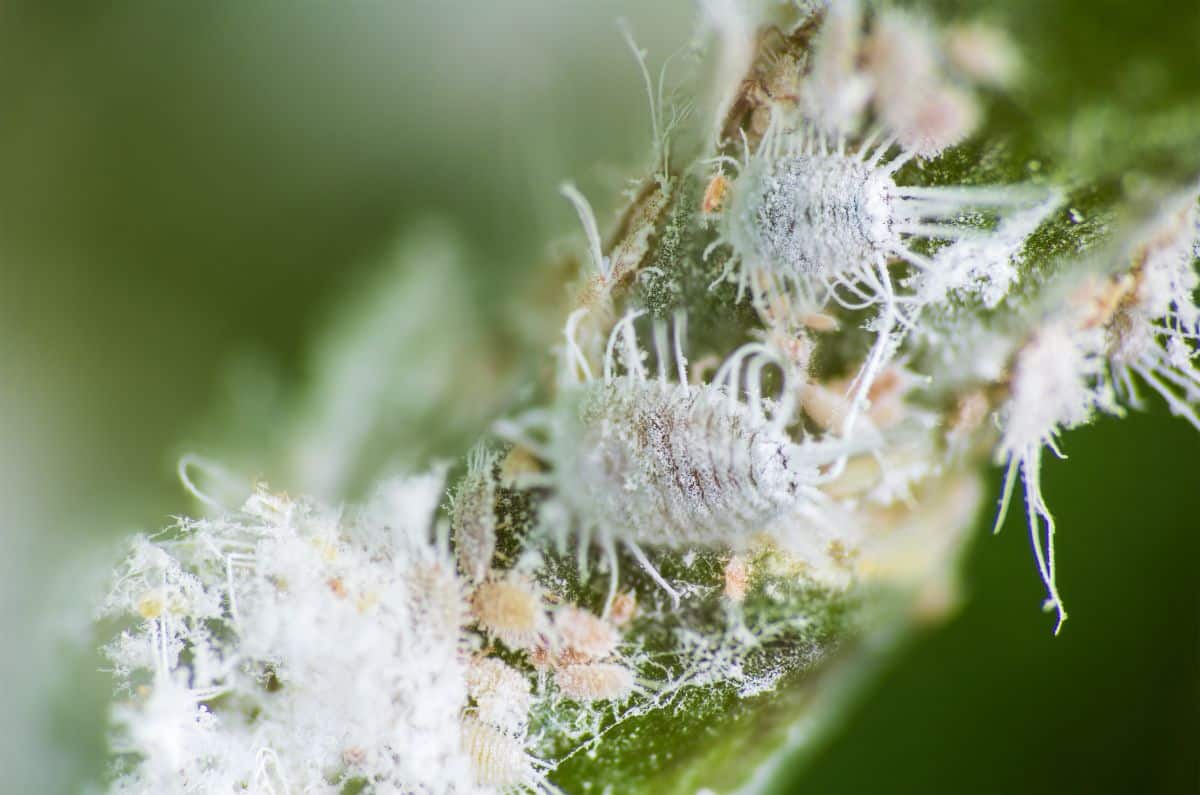
While air plants are usually pretty low-maintenance plants, they may still develop problems from time to time. Below are the most common issues you may encounter when keeping air plants and what to do about them.
Mealybugs and scale
Mealybugs and hard-bodied scales are both scale insects, and they behave similarly on air plants. Feeding on sap, these pests can weaken your air plants over time and may even kill them.
To treat for mealybugs or scale, spray your air plants with an organic, insecticidal soap or neem oil spray every 7 to 10 days until the infestation is gone. Alternatively, if your plants only have a few insect pests, you can spot-treat your air plants by dipping a Q-tip in isopropyl alcohol and dabbing it onto any scale insects you see.
Brown leaf tips
Air plants that develop brown tips on their leaves are likely suffering from too little water or humidity. If this occurs, reassess your watering schedule and consider hand misting your air plant or adding a humidifier to your grow room.
Mushy stems
Mushy stems on your air plant usually occur as a result of overwatering. If this happens, your plant has developed rot, and it is very difficult to treat.
Try to remove any mushy stems and skip watering your plant for several weeks to see if your plant recovers. If your air plant develops more mushy areas, compost your plant and try again with a new air plant.
Similar plants
Many houseplant keepers love air plants because they don’t need to be grown in soil and are very easy to cultivate. If you love air plants, you may want to try out these other epiphytic plants that don’t need soil.
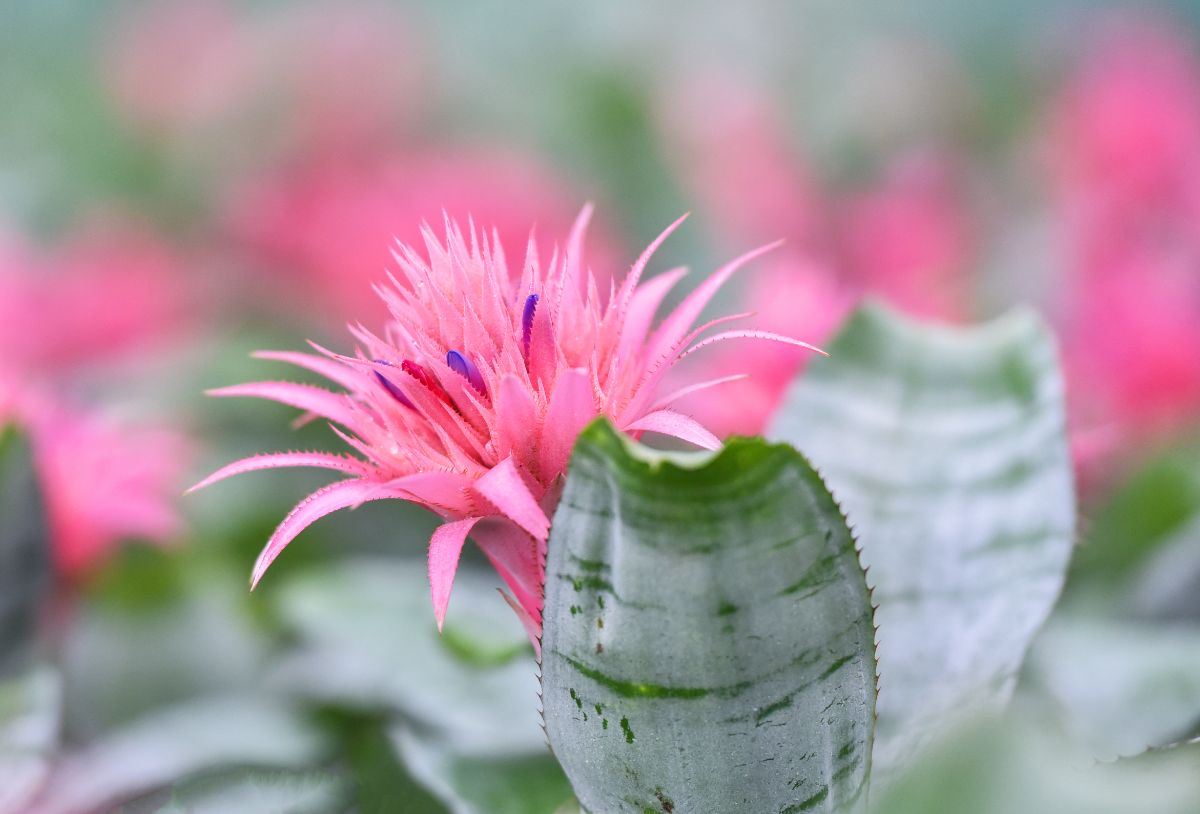
Bromeliads
Air plants are a variety of bromeliads, so if you love air plants, you’re sure to adore these colorful tropicals too! Over 75% of bromeliads are epiphytes, and they can be grown without soil. While most bromeliads feature vibrantly toned flowers, look for bromeliads with striped or spotted leaves for even more visual impact.
Orchids
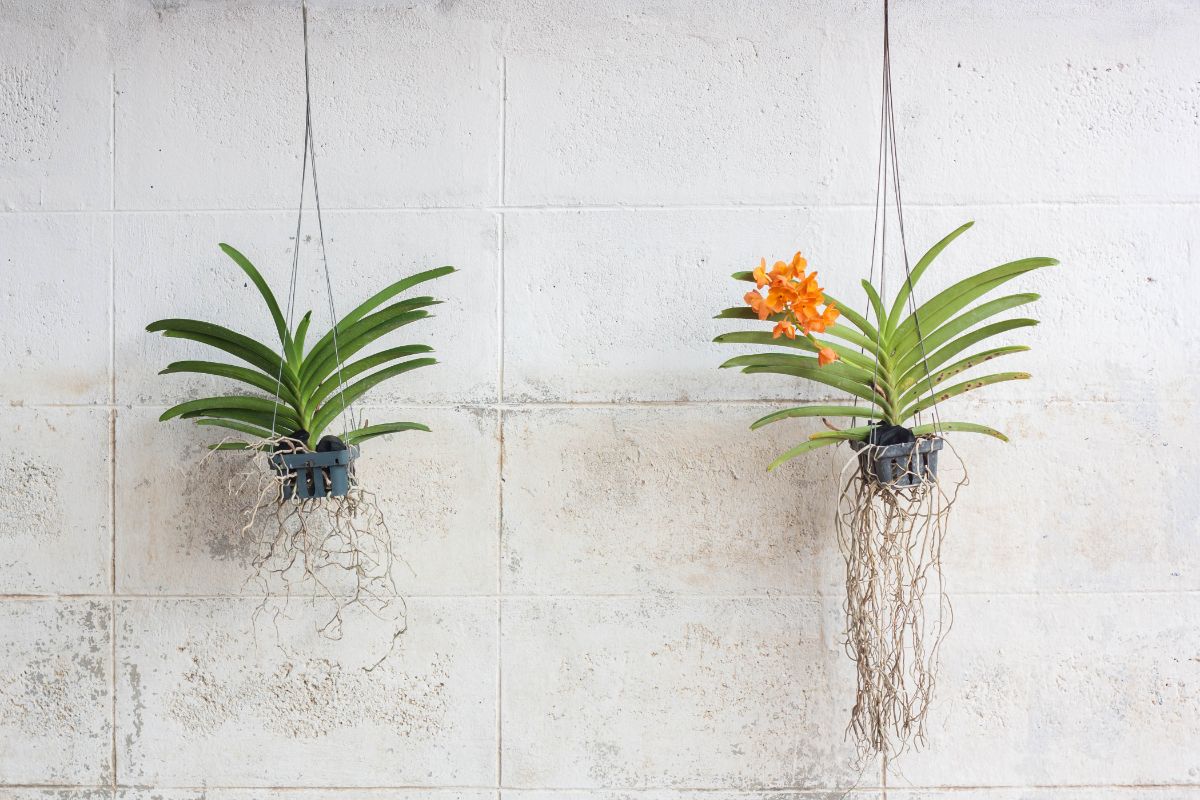
About 70% of orchids are epiphytes, and they can be grown in hanging baskets or potted in a rough, bark potting mix suitable for orchids. With colorful flowers in all shapes and sizes, you’re sure to find an orchid species that’s just right for you. However, if you’re new to keeping orchids, you may want to start out with moth orchids (Phalaenopsis) first, as these are considered to be the easiest orchids for home growers.
Staghorn fern
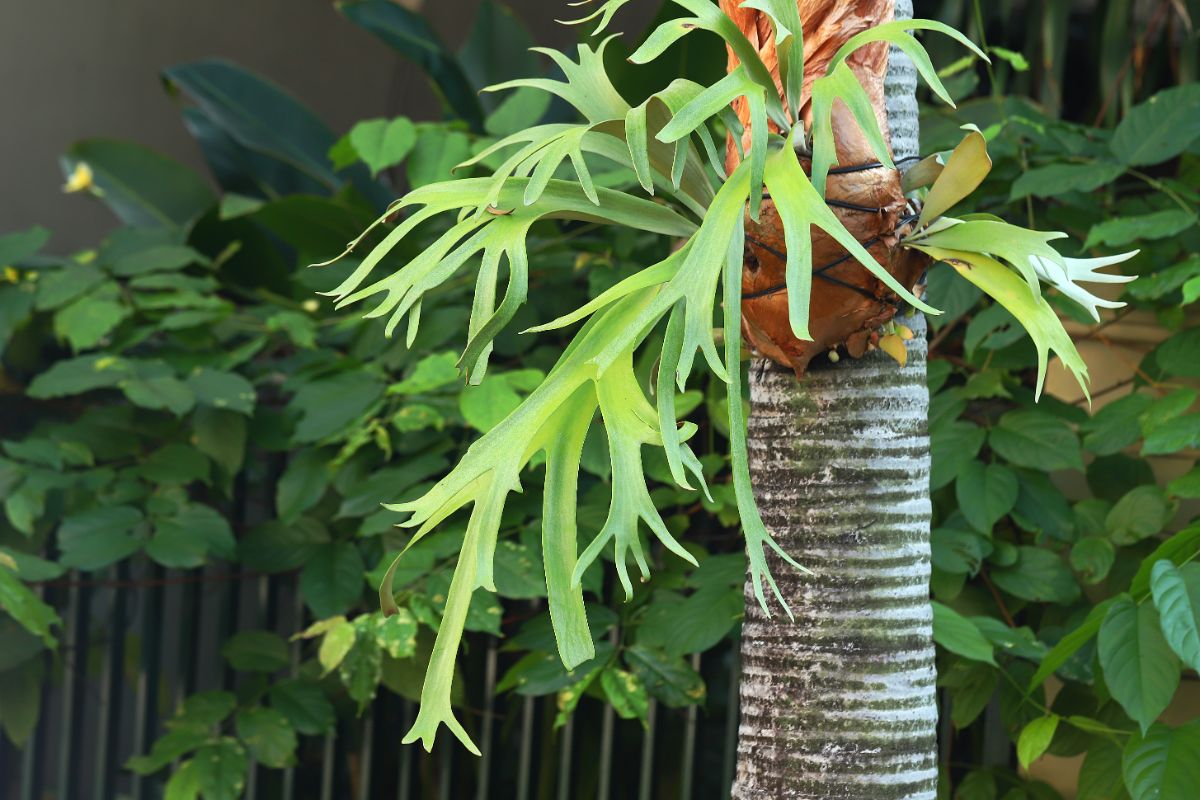
Staghorn ferns are named for their large, lobed leaves that are said to resemble a stag’s horns. A type of epiphytic fern, staghorn ferns can be grown without soil and are often mounted on wood or driftwood in houseplant collections. Like air plants, staghorn ferns require lots of humidity, so if you’re already keeping air plants, adding a staghorn fern to your collection won’t increase your plant care needs much.
Frequently asked questions
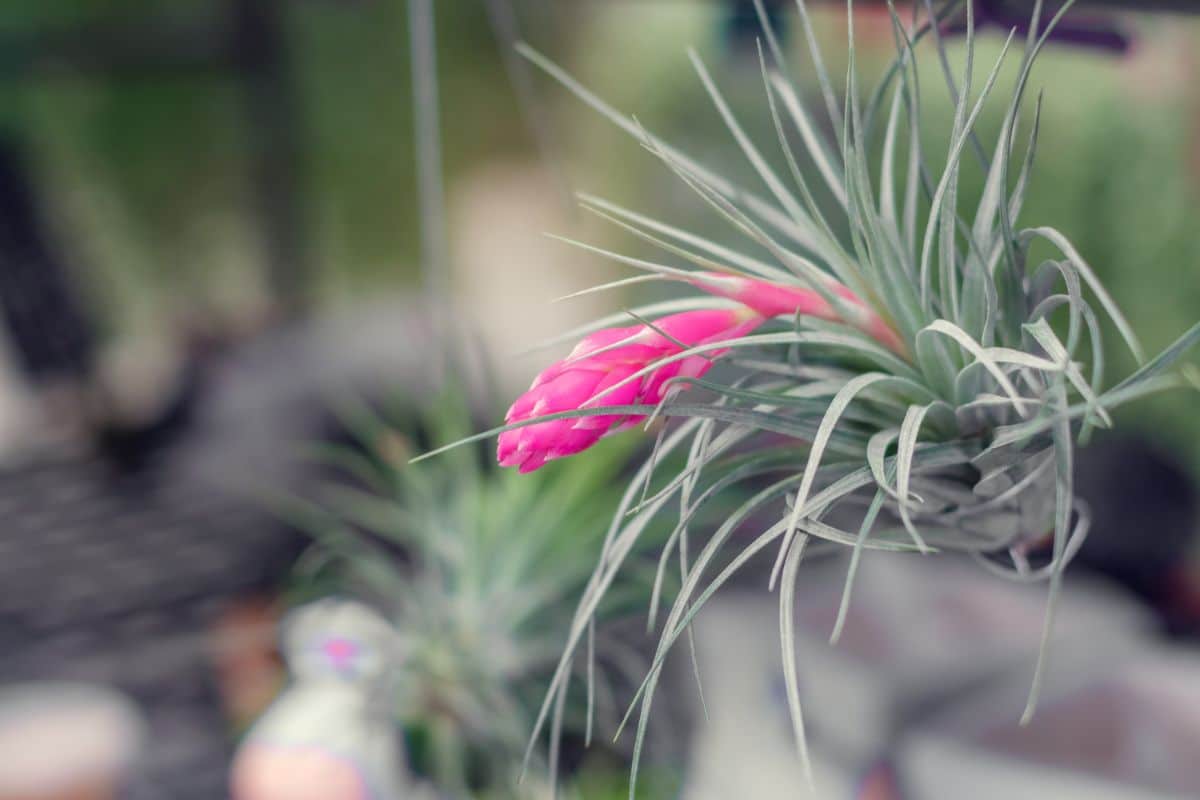
Tap water is not recommended for watering air plants as it can contain fewer minerals and more chemicals than other types of water. For best results, try watering your air plants with rain water or water from your aquarium.
Different species of air plants may have different watering needs, and some air plants prefer drier conditions and don’t like to be soaked in water. A good rule of thumb is that air plants with very fuzzy leaves prefer to be misted or quickly dunked in water. Air plants with less hairs (trichomes) on their leaves should be watered via the soaking method.
Most air plants should be watered at least once every 2 weeks. However, some air plants with fuzzy leaves are better suited to arid conditions and can handle less frequent watering.
Allowing your air plants to dry upside down after watering can help ensure your plants drain properly and won’t begin to rot. Some air plants, like Tillandsia xerographica, have a cup-shaped center in the middle of the plant, which can hold water and rot if it is not drained properly.
Most air plants will eventually bloom when they reach full maturity. You can speed this process up slightly by ensuring that your plant receives plenty of indirect light. Feeding your air plant with a bit of low-nitrogen fertilizer can also support bloom development.
Air plants are monocarpic and will begin to die back after they bloom. How long this process takes may vary depending on the type of air plant you’re keeping; however, most air plants live between 2 and 8 years.
Summary

Easy to care for and wonderfully colorful, air plants are some of the most popular houseplants around, and they’re usually readily available at most garden centers. These versatile plants can be displayed in a wide variety of ways, and their simple care requirements make them well-suited for any home grower.
While air plants are low maintenance, one surefire way to streamline your air plant care regime is to add a humidifier to your grow room. If you’re in need of a new humidifier for your plants, try out one of our favorite plant humidifiers in this guide.

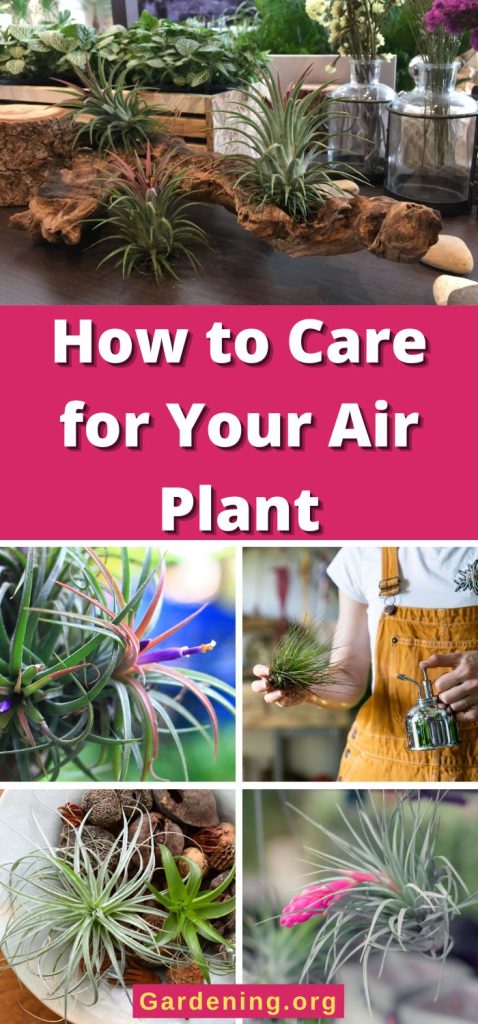
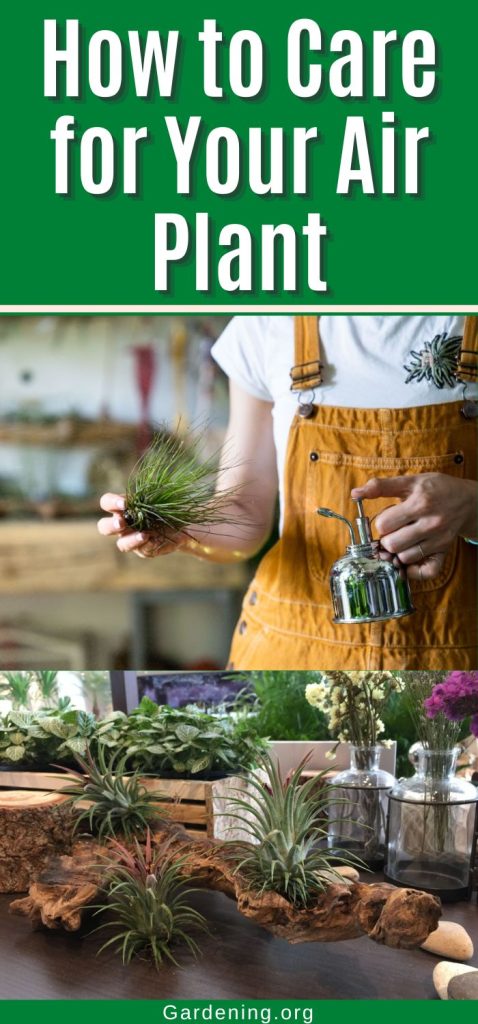
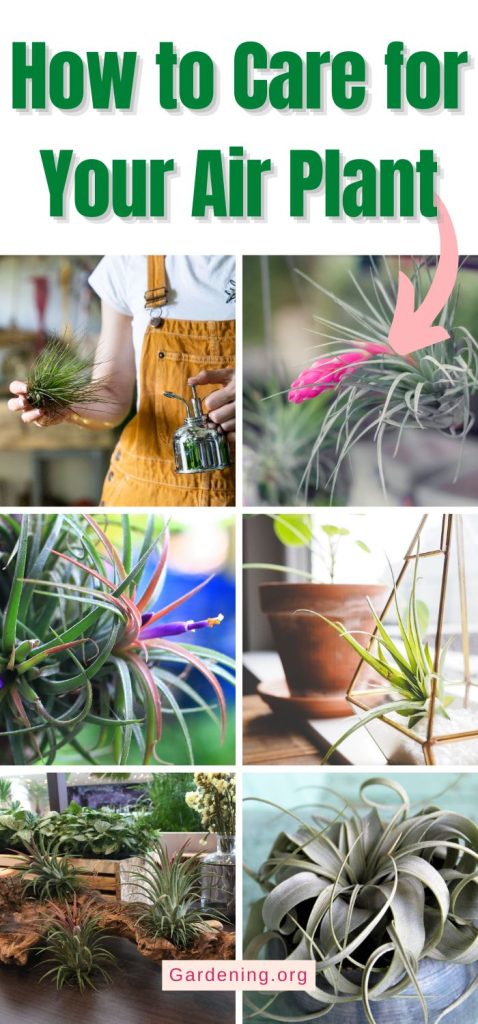
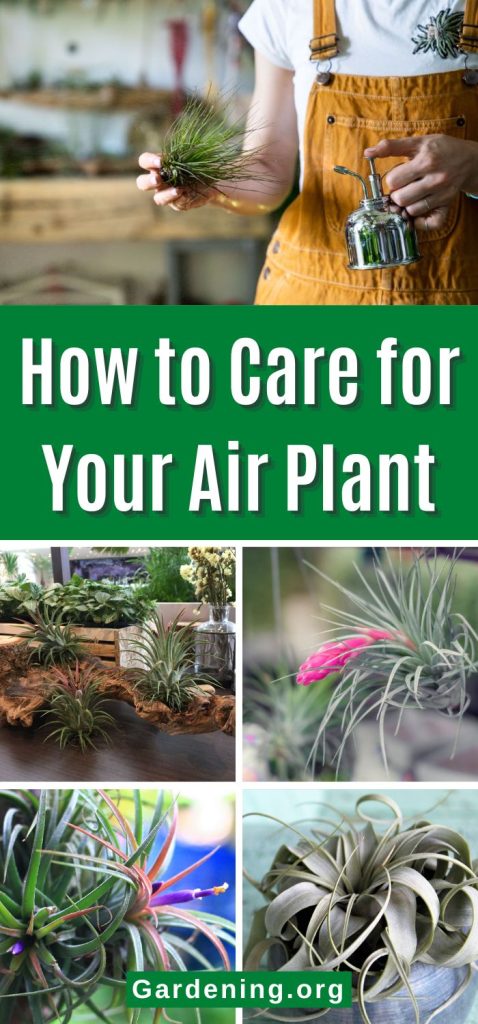
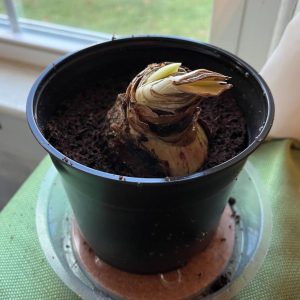



Leave a Reply